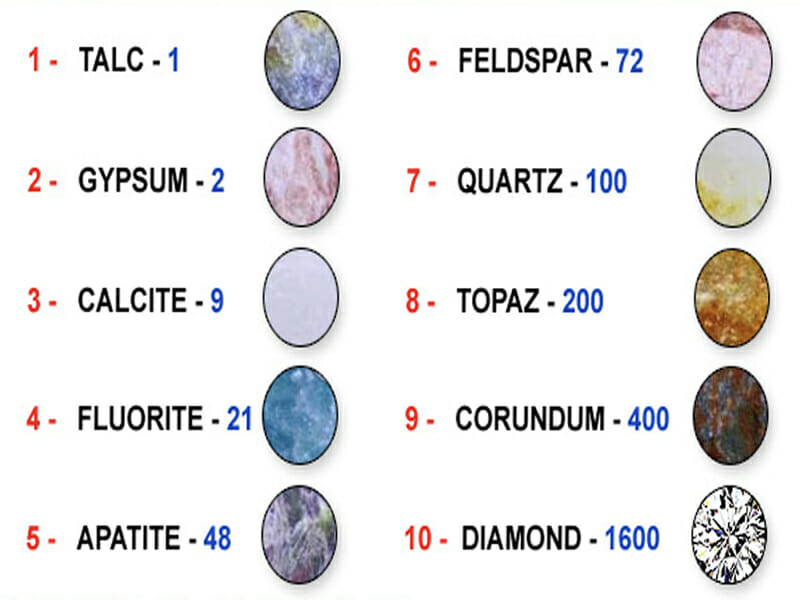
Over many millions of years a variety of processes within the earth’s core caused massive rock beds to develop and rise to form the earth’s crust. Three main types of rock formations were identified as Sedimentary, Metamorphic and Igneous rock. (Each type is described further on in this guide).
Around the world different cultures discovered that these rock beds were made up of thousands of varieties of beautiful, functional and long lasting building materials. The Egyptians commonly used limestone blocks to build the pyramids whilst the Greeks used marble to create ornamental statues and build temples. Michelangelo used marble in Italy to carve magnificent statues. The Romans used stone to build roads, domes and arches. Some cultures used broken stones from rivers and outcrops to build homes. Others set up quarries to mine the natural stones and used them to construct buildings and monuments.
Marble and granite were popular choices when building monuments due to their ability to take a polish and to resist weathering over thousands of years. Stones such as sandstone, slate and limestone were more likely to stain, crack and weather over periods from 50 – 100 years. Techniques were developed though to enhance the weather and stain resistance of some stones, and to improve their look and feel. Sealing of surfaces enabled the softer stones to be used in more practical applications.
High gloss polishing became a popular choice as it produced an appealing shiny, reflective, smooth yet hardwearing finish on granite and marble surfaces.
EMAIL OR CALL US NOW! 1300 627 626
THE MOHS SCALE

In 1822 the Mohs scale was designed by a German Frederich Mohs to evaluate the hardness of different natural stones and to determine the suitability for various projects and environments. This governed which tools were appropriate for cutting, carving and polishing, and the type of care needed to maintain the finish.
The Mohs scale of measurement is still used today. Understanding the Mohs scale can assist owners of natural stone to prevent damage when maintaining their stone surfaces.
Hard substances like sand grit rated at 6 will scratch softer substances like marble rated at 3.
Material like granite rated at 6 is better suited to kitchen benchtops as it doesn’t scratch easily or etch, whereas a marble kitchen benchtop rated at 3, would be more susceptible to etching and scratching.
10 Diamond
9 Sapphires and rubies
8 Topaz
6 – 7 Granite and manufactured stone
5 – 5.5 Opal
4. Platinum
3 – 4.5 Serpentine
3 Marble, limestone, slate, gold, silver and copper
2 Can be scratched with a fingernail
1 Will crumble like talc
EMAIL OR CALL US NOW! 1300 627 626
QUARRYING

Natural stone has been quarried for centuries in many countries around the world. By the late 1800’s in Australia, sandstone was commonly quarried and used in large structures such as bridges and public buildings due to its strength, durability, availability and beauty. This trend continued until the start of World War II, when production declined. The onset of war caused a depression and many quarries stopped operating. In the late 1980’s stone experienced a resurgence as a popular building material.
Australia has significant deposits of natural stone and many operating quarries. The texture and colour of each type of stone varies from quarry to quarry. These differences allow for more variety when designing interiors and choosing stone. Operating quarries in Australia:
- In Western Australia marble is quarried in Maroonah, granite in the Fraser Ranges, Esperance, Jerramungup, Bruce Rock and Watheroo, limestone in Moore River, Seabird and Postans, sandstone in Donnybrook, Karratha and Mount Jowlaenga, and other stones in the Ord Ranges and Mount Barker
- In Queensland sandstone is quarried in Helidon, Murphy’s Creek, Warwick and Beaudesert
- In South Australia granite is quarried in Wallaroo, Streaky Bay and Black Hill, slate in Mintaro and limestone in Waikeri and Ramco
- In Victoria granite is quarried in Benambra and sandstone in the Grampians
- In New South Wales granite is quarried in Tocwal, Dundee and Gosford
- In the Northern Territory granite is quarried in Tennant Creek
EMAIL OR CALL US NOW! 1300 627 626
QUARRYING METHODS

Quarrying methods vary depending on the type of stone being quarried and the equipment available. Quarry operators look for natural joints in the stone, so they can split it and cut it to size. Explosives are often used with great expertise, so blocks can be obtained in required sizes.
In the case of granite, large blocks are removed from the ground using explosives. When quarrying marble, operators must be very careful not to shatter the stone so they use machines that channel through the stone rather than explosives. Sandstone is removed using an excavator or crowbar, or is split using metal rods and plugs. The metal strips are placed in the holes and the plugs are hammered between the strips, which splits the rock.
Once the stone has been removed from the quarry it is transported using heavy duty trucks and machinery to a processing area where it is cut into slabs. The size and thickness that the slab will be cut to will depend on its final use.
After cutting, the slabs are ready for use unless further enhancement is required, such as planing, profiling, texturing, polishing or honing. In this case specialised saws, some incorporating computer technology, are used to create a variety of shapes, designs and surface finishes. Some pieces requiring more detail are crafted by a stonemason.
From the quarry processing site, the stone is then carefully transported to the manufacturer. Natural stone is extremely heavy therefore specialised machinery and vehicles are required for lifting and transport.
EMAIL OR CALL US NOW! 1300 627 626
MASTER BUILDERS QLD MEMBER

HIA QLD MEMBER

TUFFSKIN APPROVED APPLICATOR

AQUAMIX APPROVED APPLICATOR

DRYTREAT APPROVED APPLICATOR


